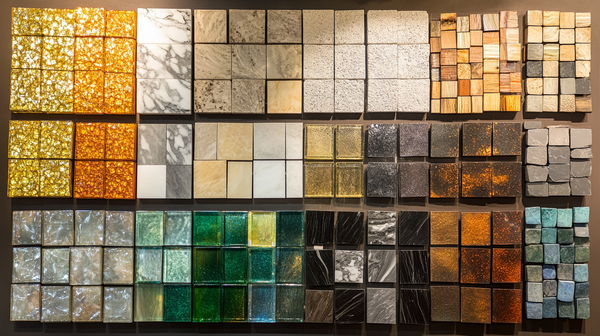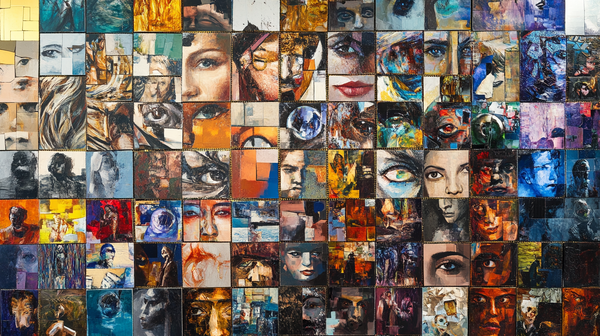The Magic of 8-Bit Pixel Graphics: Reviving Retro in Games and Comics
Pixel art is back, and it’s better than ever! Learn how to create stunning 8-bit graphics with MidJourney and bring the charm of retro gaming and comics to life.

Introduction
The 8-bit era is more than just a nostalgic throwback; it's a timeless art form that blends simplicity with creativity. Whether you’re a game designer, comic artist, or simply an enthusiast, pixel art opens up endless possibilities for storytelling and design. With AI tools like MidJourney, you can effortlessly reimagine pixel art from different eras of 8-bit gaming. Here’s how you can get started, plus five awesome prompts to try today!
Why 8-Bit Graphics Still Shine
- Nostalgia Meets Modern Creativity: For many, 8-bit art evokes memories of playing classics like Super Mario Bros. or Pac-Man. These graphics transport players to simpler times, making them a hit for retro-style games and comics.
- Simple Yet Expressive: Limited by technology, early artists mastered minimalism to evoke emotion and movement with just a few pixels.
- Adaptability: Pixel art isn't just for gaming anymore. It’s used in modern comics, music videos, and even animations to give a unique retro aesthetic.
MidJourney for Pixel Art: Your Retro Design Ally
MidJourney, a generative AI tool, can be a game-changer for creating authentic pixel art. By customizing prompts, you can recreate graphics reminiscent of specific gaming eras. Whether you want the chunky pixels of early arcade games or the refined designs of late-8-bit consoles, MidJourney has you covered.
5 Pixel Art Prompts to Transport You Through Gaming History
1. 1980s Arcade Boom (Pac-Man Era)
"A vibrant 8-bit pixel art arcade scene with neon lights, featuring a maze, ghosts, and a hero munching dots, inspired by the golden age of gaming in the 1980s. Bold primary colors with heavy black outlines."

Key Features:
- Chunky pixels with minimal shading.
- Bright, contrasting colors (yellow, red, blue).
- Simple geometric shapes.
2. NES Masterpieces (1985-1990)
"A heroic knight in pixelated armor battling a dragon in a castle dungeon, styled after classic NES games like Zelda or Castlevania. Muted colors with a touch of gothic flair."

Key Features:
- Defined sprite characters with clear edges.
- Slightly more complex backgrounds (brick walls, torches).
- Muted earth tones combined with pops of red or gold.
3. Early RPG Adventures (SNES-Inspired, Late 1980s)
"A lush pixelated forest with a young warrior and mage team exploring, surrounded by mysterious glowing ruins. Vibrant colors and detailed textures reminiscent of early RPG classics."

Key Features:
- Detailed foliage with pixel shading techniques.
- Dynamic character poses with expressive faces.
- Enhanced use of gradients and depth for a richer world.
4. Sci-Fi Pixel Aesthetic (1985-1995)
"A cyberpunk cityscape in 8-bit pixel art, with flying cars, neon-lit skyscrapers, and a pixelated robot hero overlooking the scene. Inspired by sci-fi games of the 1990s."

Key Features:
- High contrast between neon and dark tones.
- Intricate patterns for city lights.
- Futuristic character designs with sharp silhouettes.
5. Retro Comic Strip
"A comedic 8-bit pixel art comic strip showing a hero losing their health bar while eating a poisoned mushroom. Bright, exaggerated expressions in retro comic format."

Key Features:
- Simple yet exaggerated sprites for humor.
- Panel layout mimicking traditional comics.
- Story-driven visuals in 4-6 frames.
Tips for Generating Stunning Pixel Art
- Be Specific: Mention the era, style, and inspiration (e.g., NES, RPG, cyberpunk).
- Use Descriptive Phrases: Words like “vibrant,” “chunky,” or “muted” guide the AI for accuracy.
- Experiment: Tweak lighting, textures, and characters to refine your results.
Conclusion
8-bit pixel art remains a powerful tool to blend nostalgia with innovation. Whether you’re crafting retro-inspired games or quirky comics, tools like MidJourney make it easier than ever to dive into this timeless art form. So fire up MidJourney, experiment with these prompts, and create something uniquely retro.
What’s your favorite 8-bit era? Share your creations or thoughts in the comments below!




